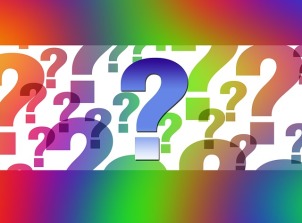Fellow Sackler member Jim Parkinson brought to my attention the fact that this year’s Flame Challenge – explaining science to 11-year-olds in less than 300 words – is on the topic “What is Color?”. I decided to take up the challenge; here’s my entry (299 words!):
The question “what is color?” is tricky. Understood one way, it hardly needs answering for people with normal vision, who have no problem learning how to use the word “color” and what the names for different colors are: color is just part of the way that things look. But that answer would be of little use to a blind person, since for them objects don’t “look” any way at all. Science should try to explain things for everyone, so here’s an explanation of color that works for all people, sighted or blind.Light is a collection of extremely small particles called photons. A photon might begin its journey at a lamp, bounce off an object (such as a book), and end its journey by being absorbed by one of the cells that line the back wall inside your eye. Photons wiggle while moving – some wiggle slowly, some quickly.The color of an object is the mixture of wiggle speeds of photons the object gives off in normal light.Sighted people can see an object’s color because the way a photon affects their eye cells depends on its wiggle speed. For example, if your eye absorbs a slow wiggling photon, you see red; a fast wiggling photon, you see blue. Mixtures of wiggle speeds have a mixture of effects on your eye cells, letting you see a mixture of colors. Something colored white gives off photons of all wiggle speeds.If you shine red light on a white ball it looks red, but its actual color is still white because if it were in normal light it would give off photons of all wiggle speeds. Similarly, a blue book in the dark is still blue because it would still give off fast wiggling photons were it in normal light.
Comments welcome.

